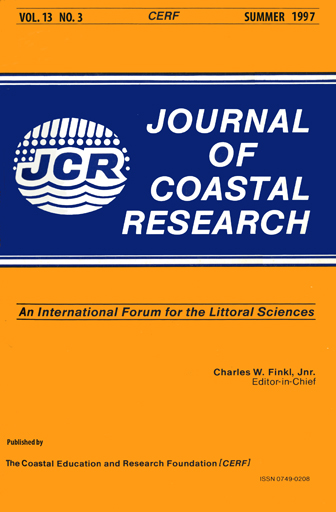A Markovian Approach to Modeling Succession on a Coastal Barrier Island Following Beach Nourishment
Keywords:
Disturbance, hurricanes, transition probabilities, managementAbstract
Markov models are used to understand and predict future successional pathways of vegetation on a barrier island off the coast of northwest Florida following massive beach nourishment below mean high water IMHW) in late 1990. Discriminant Analysis and Two-Way Indi cat or Species Analysis were used to classify permanent plots surveyed annually in the autumn above old MHW from 1989 to 1993 into one of eight vegetation types (strand, wooded dunes, back slopes, dunes, dry swales , wet swales, marsh or empty). Annual change in the classification of individual plots was used to derive transition matrices that give the probability that a plot will be classified in a subsequent year as a different vegetation type, or remain the same. Transition matrices derived from separate years indicate that overall successional dynamics of the vegetation above old MHW did not change following deposition of the dredge spoil below old MHW. The modeling procedure allowed the potential vegetation dynamics of the barrier island to be projected so that the effects of management and natural disturbance can be assessed quantitatively. Markov model simulation of vegetation development on the dredge spoil, showed that primary succession was proceeding according to the vegetation dynamics above old MHW, but at a rate slower than predicted. It is postulated that the slow rate of primary succession on the dredge spoil was due to natural disturbances, such as flooding by the storm surge accompanying Hurricane Andrew in August 1992. Inclusion of hurricane effects (frequency, based upon historical records, and intensity) in a subsequent simulation suggests that the stable state predicted by the model is unlikely to be reached. This model provides a theoretical developmental pattern for the vegetation on the dredge spoil to be established against which future patterns may be compared. The model also allows the ecological success of the nourishment project to be judged quantitatively.


